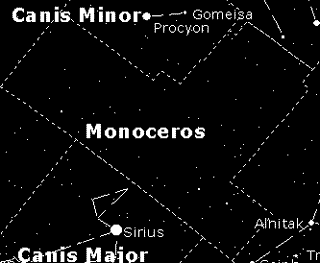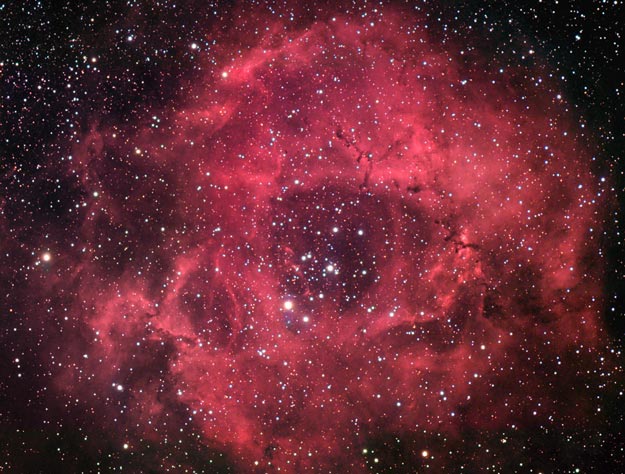Astronomy Picture of the Day
Discover the cosmos! Each day a different image or photograph of our fascinating universe is featured, along with a brief explanation written by a professional astronomer.
Posted on 04/29/2003 5:30:53 AM PDT by petuniasevan
Discover the cosmos! Each day a different image or photograph of our fascinating universe is featured, along with a brief explanation written by a professional astronomer.
Explanation: In the heart of the Rosette Nebula lies a bright open cluster of stars that lights up the nebula. The stars of NGC 2244 formed from the surrounding gas only a few million years ago. This just-released image taken by the CFHT's new MegaPrime camera shows the region in unprecedented detail. Although the emission nebula is dominated by red hydrogen light, the above image has exaggerated the effect of green light emitted primarily by small amounts of oxygen. A hot wind of particles streams away from the cluster stars and contributes to an already complex menagerie of gas and dust filaments while slowly evacuating the cluster center. The Rosette Nebula's center measures about 50 light-years across, lies about 4500 light-years away, and is visible with binoculars towards the constellation of Monoceros.
I will be on vacation from June 2nd through June 9th.
If anyone would like to volunteer to post APOD during that time, please FReepmail me.
Otherwise the APOD will not be posted as I will be visiting relatives in California.
Here is the location of the constellation Monoceros (Unicorn).

Rosette Nebula and its statistics

The Rosette Nebula is a vast cloud of dust and gas, extending over an area of more than 1 degree across, or about 5 times the area covered by the full moon. Its parts have been assigned different NGC numbers: 2237, 2238, 2239, and 2246. Within the nebula, open star cluster NGC 2244 is situated, consisted of the young stars which recently formed from the nebula's material, and the brightest of which make the nebula shine by exciting its atoms to emit radiation.
| Rosette Nebula NGC 2237-9,46 |
NGC 2244 |
|
|---|---|---|
| Right Ascension | 06 : 32.3 (h:m) | 06 : 32.4 (h:m) |
| Declination | +5 : 03 (deg:m) | +4 : 52 (deg:m) |
| Distance | 5.5 (kly) | 5.5 (kly) |
| Visual Brightness | ? (mag) | 4.8 (mag) |
| Apparent Dimension | 80x60 (arc min) | 24 (arc min) |
You can find the associated star cluster with binoculars, but the nebulosity is elusive visually. Objects like this are at their best when imaged. The following image is a drawing of what the artist saw through a 14-inch Dobsonian telescope.

Contrast that with red-sensitive film photography or CCD imaging:

Finder chart for NGC 2244, among other things...


Disclaimer: Opinions posted on Free Republic are those of the individual posters and do not necessarily represent the opinion of Free Republic or its management. All materials posted herein are protected by copyright law and the exemption for fair use of copyrighted works.